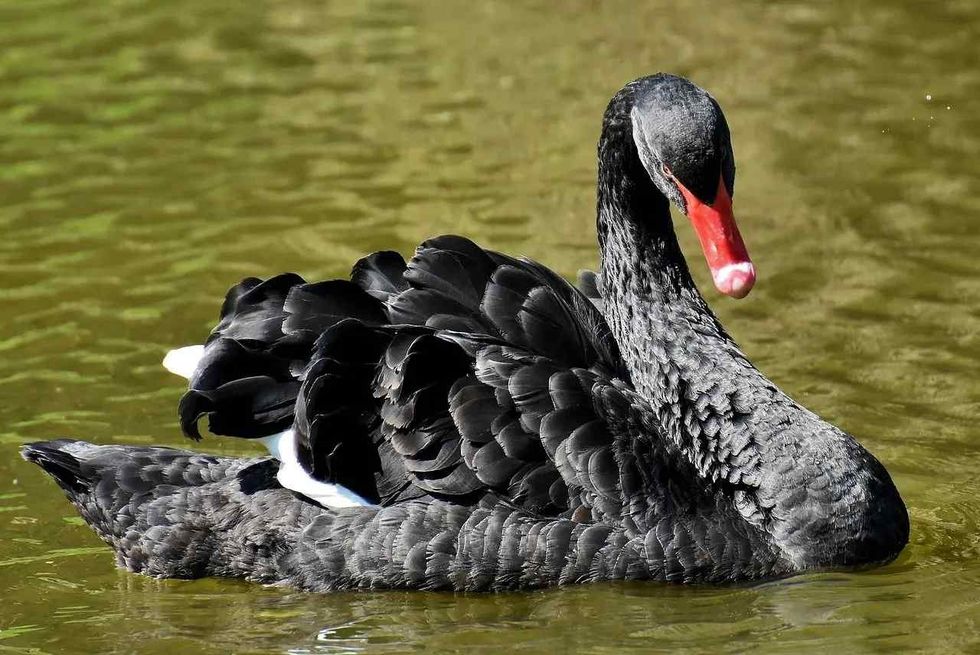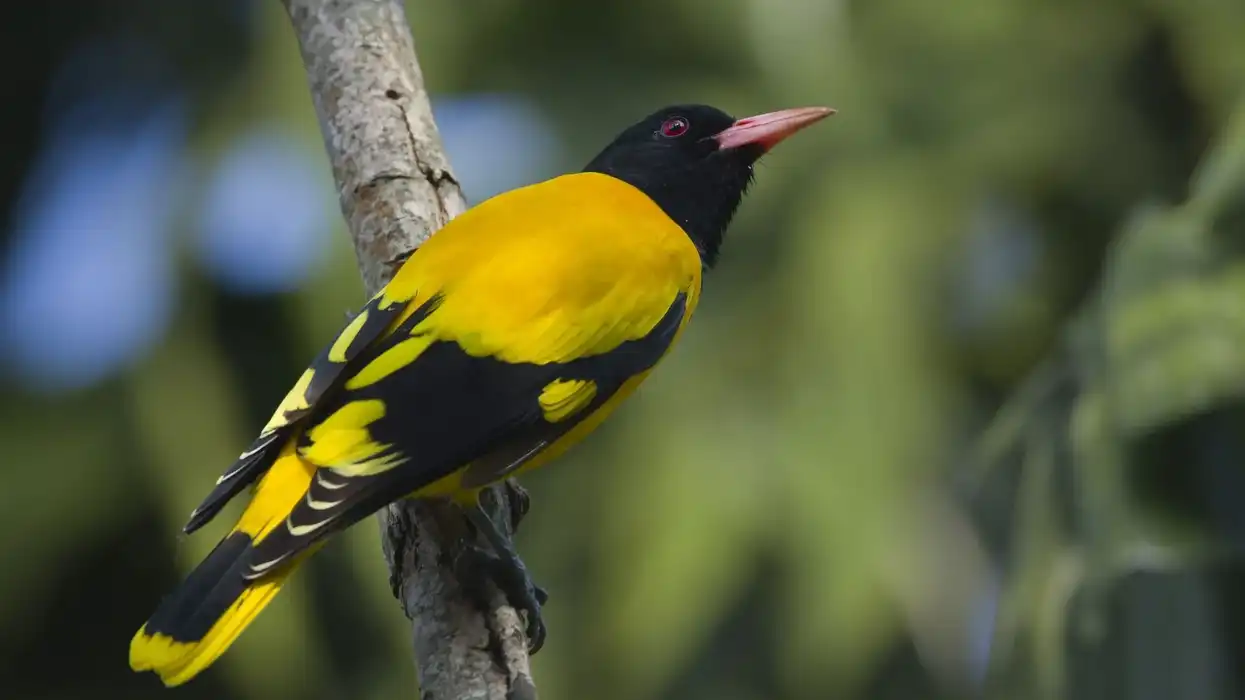A popular species of bird one may come across is a swan. These birds are quite popular in various cultures and traditions.
Black swans (scientific name Cygnus atratus) are represented as symbols of love, inner beauty, prosperity, grace, and trust across traditions. These beautiful birds are looked up to by many of us. It is quite obvious that this beautiful and graceful ave is of enormous significance.
Black swans are native to Western Australia and Eastern Australia. This fact file is about the black swan bird, native to Australia and New Zealand.
The breeding season for these nesting birds starts in February or March and may go on till September and in some cases till December. Black Swans are not much different from other swan species, like white swan birds, and are scientifically known as Cygnus atratus. Here are some fascinating black swan bird facts for your perusal.
After reading these black swan facts, you may also look at these trumpeter swan facts and swan goose facts.
Black Swan Interesting Facts
What type of animal is a black swan?
A Black swan is a very beautiful bird belonging to the family of Aves, named Anatidae. The birds of this family are called water birds, that is black swans can swim and live in water bodies and also walk on land. These nesting birds have a cosmopolitan distribution, so black Swans are found in a variety of habitats globally.
What class of animal does a black swan belong to?
The black swan is a nesting bird that belongs to class aves of kingdom Animalia and more specifically to the order Anseriformes. These waterfowls are captivating creatures with long, curved necks and elongated bodies.
How many black swans are there in the world?
A black swan waterfowl is an adaptive organism. They are capable of surviving in a variety of habitats across the globe. Their number is stable for now and globally their population is about 100,000-1,000,000 in number.
Where does a black swan live?
These are water birds and prefer staying in the water and feeding from the aquatic vegetation. The black swan is predominantly found throughout the Australian continent and New Zealand along with the water bodies.
What is a black swan's habitat?
In the places of their residence, swans predominantly reside in water bodies. Black swan habitat comprises brackish waters, ponds, lakes, more specifically water with aquatic vegetation to feed on. Black swans build their nests near these water bodies with leaves, straws, and other plant remnants.
Who do black swans live with?
These waterfowls are social birds but black swans are mostly spotted wandering alone. A breeding pair may be found together displaying companionship and black swans may sometimes be spotted along with other inhabitants of their niche.
How long does a black swan live?
Black swans live a pretty long life, especially with their companions, this swan species may live for a longer period. In comparison with other wild birds, Cygnus artrus may live for many years. Even though there is not much observation made on longevity, reports have shown that the black swan may live for around 40 years.
How do they reproduce?
These birds live a monogamous life. Only a few of them may find more than one mate for breeding. From February to September (sometimes till December), black swans build their nests for breeding and laying eggs.
Their nests are usually made of weeds and tall grass arranged shabbily, in an untidy manner. There, the female black swan lays eggs after mating and both parents look after the eggs till the cygnets hatch.
Before fledging, the cygnets stay with their parents for nine months at least. Parents may undertake trips across the river bodies. When these trips are longer, the cygnets ride the back of the parents.
What is their conservation status?
IUCN has rated these birds as the least concerned species. Black swans are seen in a good number of pairs across the Australian continent.
But too much human interference in their natural habitat has imposed a threat to this species; urbanization and human occupation of the pond areas and parks have reduced the amount of vegetation these birds feed on.
Visitors constantly feeding them with bread and other foodstuff, may make them dependent on humans for food and black swans may lose their instincts of foraging. Juvenile swans may never learn how to look for their food and instincts of survival, which in turn will make them more vulnerable to predators like foxes.
Black Swan Fun Facts
What do black swans look like?
The Black swan is usually a little larger than the white swan bird. Their exoskeleton is covered totally in black feathers and their neck is long and curved.
The color of their bill is bright red and has a slightly blunt tip. Male swans are bigger than female swans but both have similar appearances, except female swans have slightly longer and straighter bills.
How cute are they?
Black swans are extremely beautiful and cute birds. These birds are super friendly and are adorable species of birds. Black swans are quite often found interacting with humans and playing around with other swan birds in water bodies and on land.
How do they communicate?
These birds are pretty vocal and have a vast vocabulary. Both males and females produce snorting sounds while greeting. Female swans produce yapping sounds while calling their brood. Besides, black swans are also seen communicating with their bodies by performing what is called a ‘swan dance’ during courtship displays.
How big is a black swan?
A black swan is a large-sized waterfowl, slightly bigger than a white swan. An average adult black swan measures around 43-56 in (109-142 cm) and has a wingspan of around 62-78 in (157-198 cm). A cob is usually bigger than an aspen.
How fast can a black swan move?
Black swans (phylum Chordata) are graceful birds and have good speed. With their necks stretched Black swans can fly around 18 mph (28 kph). The top speed noted for these birds is around 50 mph (80 kph).
How much does a black swan weigh?
A cob weighs more than a pen. Black swans weigh around 8.2-19.8 lb (3.7-8 kg). These are heavy birds and have good longevity.
What are the male and female names of the species?
A female black swan is referred to as aspen and a male black swan goes by the name of cob. Aspen and Cob usually pair for their entire life and are less likely to change partners.
Thus, black swans in pairs, are regarded as symbols of love. These adorable birds look after their eggs together and take turns in incubating and protecting their young ones. They somewhat live like a family just like us humans.
What would you call a baby black swan?
A baby swan is a cygnet and has a pale appearance. A cygnet has greyish-brown feathers covering its body and has a fluffy and adorable appearance. Baby black swans get the name cygnets from Old French literature, where ‘cigne’ or ‘cisne’ means ‘little'.
What do they eat?
A black swan is a predominant waterfowl and feeds on vegetation from these water bodies. The black swan diet comprises aquatic plants such as bryophytes, algae, and weeds. Humans may feed these birds with a diet of seeds, bread, and leftover food.
Are they rare?
These birds are well-protected and rare. Even though these birds are native to Australia, black swans were introduced as an exotic ornamental species in various parts of the globe such as Japan, China, the United States, and the United Kingdom.
Would they make a good pet?
A swan in general is a social bird and is very friendly. Black swans are well-domesticated for various purposes. But the black swan is a more aggressive type of bird, especially during mating season, and attacks with its strong bill and long wings. These birds can be domesticated but proper care has to be taken.
Did you know...
The black swan is native to Australia and just like in European culture, black swans hold a special place in Australian tradition. A black swan is a state bird and state emblem of Western Australia and is featured on their flag.
Black Swans have around 24-25 neck vertebrae, more than mammals.
Can black swans fly?
A black swan can most definitely fly with a speed of 18-20 mph (28 kph). Along the Tundra region, black swans are seen flying at heights of around 6,000-8,000 ft (1828-2438 m).
What do black swans symbolize?
A swan is taken as a symbol of love and prosperity across various cultures. Their companionship with their partners and expressive personalities in their social circle has given black swans this status.
Here at Kidadl, we have carefully created lots of interesting family-friendly animal facts for everyone to discover! For more relatable content, check out these Tawny Eagle Facts and Laysan Albatross Facts.
You can even occupy yourself at home by drawing one on our swan coloring pages.










